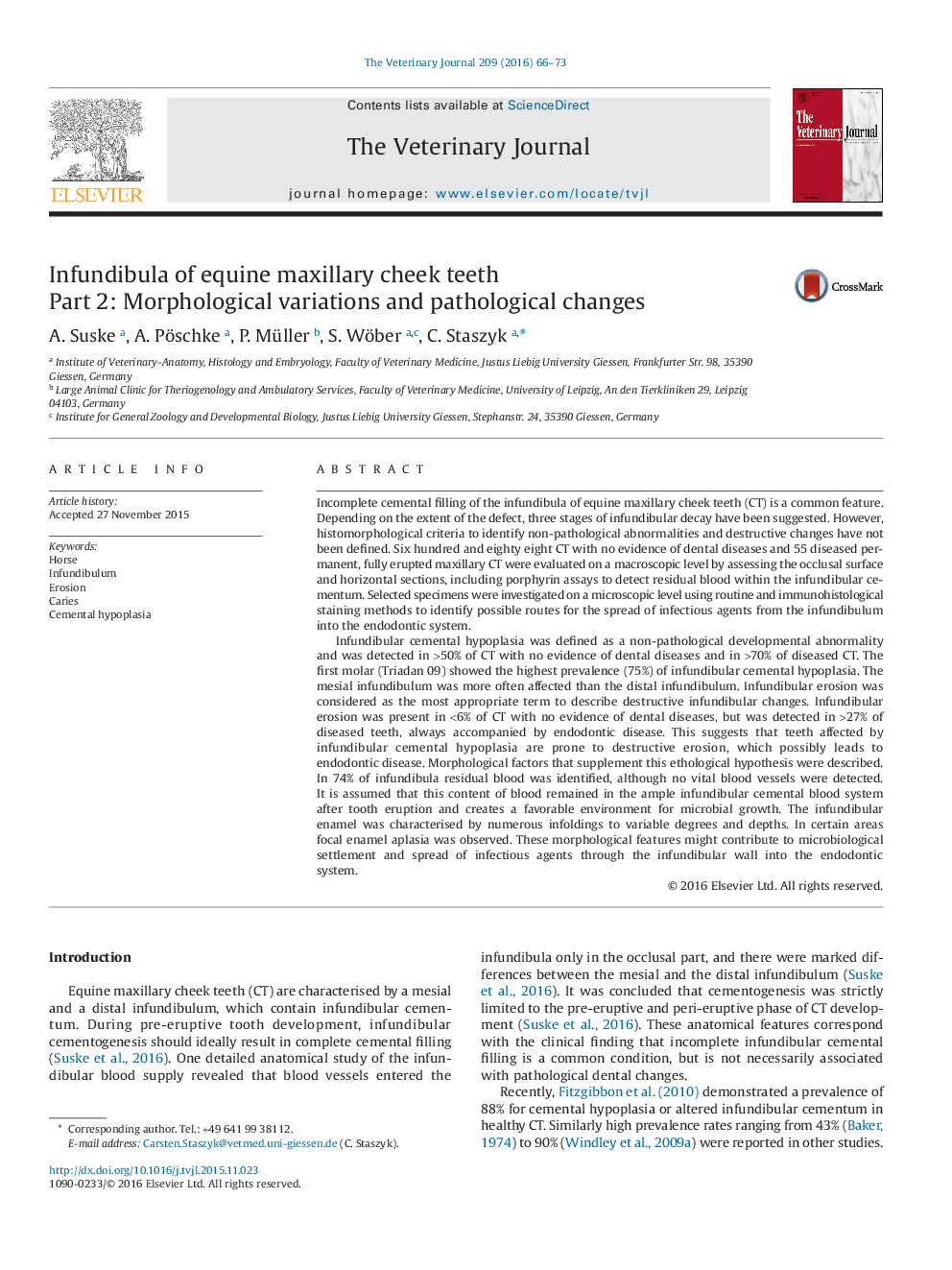| کد مقاله | کد نشریه | سال انتشار | مقاله انگلیسی | نسخه تمام متن |
|---|---|---|---|---|
| 5797324 | 1555234 | 2016 | 8 صفحه PDF | دانلود رایگان |

- Definitions for infundibular cemental hypoplasia and infundibular erosion are proposed.
- Prevalences of these were documented in healthy and diseased equine cheek teeth.
- Explanations for high prevalences in certain infundibula/teeth are proposed.
- Infundibular erosion is regarded as a pathological condition causing dental diseases.
- Mechanisms for spread of infectious agents into the dental pulp were identified.
Incomplete cemental filling of the infundibula of equine maxillary cheek teeth (CT) is a common feature. Depending on the extent of the defect, three stages of infundibular decay have been suggested. However, histomorphological criteria to identify non-pathological abnormalities and destructive changes have not been defined. Six hundred and eighty eight CT with no evidence of dental diseases and 55 diseased permanent, fully erupted maxillary CT were evaluated on a macroscopic level by assessing the occlusal surface and horizontal sections, including porphyrin assays to detect residual blood within the infundibular cementum. Selected specimens were investigated on a microscopic level using routine and immunohistological staining methods to identify possible routes for the spread of infectious agents from the infundibulum into the endodontic system.Infundibular cemental hypoplasia was defined as a non-pathological developmental abnormality and was detected in >50% of CT with no evidence of dental diseases and in >70% of diseased CT. The first molar (Triadan 09) showed the highest prevalence (75%) of infundibular cemental hypoplasia. The mesial infundibulum was more often affected than the distal infundibulum. Infundibular erosion was considered as the most appropriate term to describe destructive infundibular changes. Infundibular erosion was present in <6% of CT with no evidence of dental diseases, but was detected in >27% of diseased teeth, always accompanied by endodontic disease. This suggests that teeth affected by infundibular cemental hypoplasia are prone to destructive erosion, which possibly leads to endodontic disease. Morphological factors that supplement this ethological hypothesis were described. In 74% of infundibula residual blood was identified, although no vital blood vessels were detected. It is assumed that this content of blood remained in the ample infundibular cemental blood system after tooth eruption and creates a favorable environment for microbial growth. The infundibular enamel was characterised by numerous infoldings to variable degrees and depths. In certain areas focal enamel aplasia was observed. These morphological features might contribute to microbiological settlement and spread of infectious agents through the infundibular wall into the endodontic system.
Journal: The Veterinary Journal - Volume 209, March 2016, Pages 66-73